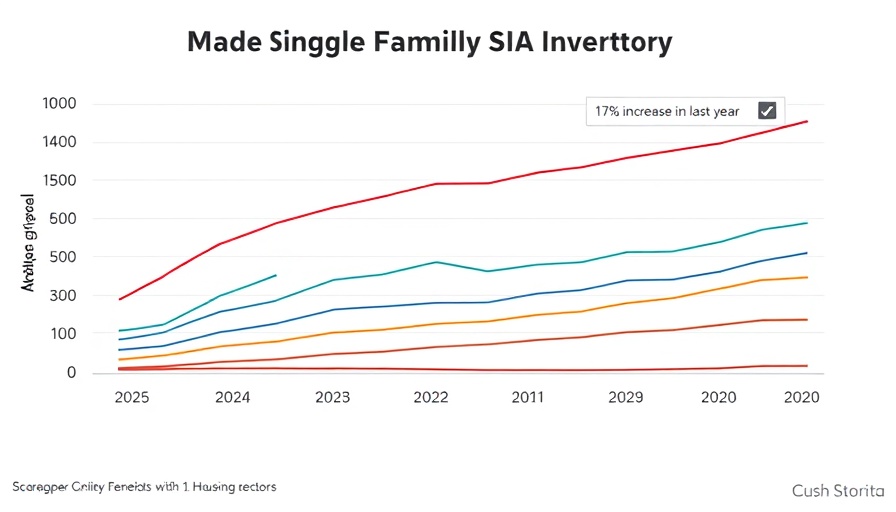
Housing Inventory Peaks Unexpectedly in August: A Shift in Market Dynamics
The housing market has seen a surprising shift as housing inventory peaked unseasonably early in August 2025. Traditional patterns suggest that inventory typically peaks later in the year, especially with rising mortgage rates. However, this year’s data reflects a diverging trend that could redefine buyer-seller dynamics moving forward.
Understanding the Inventory Trends
August 2025 marked a significant turning point, with inventory growth slowing dramatically. Inventory growth, once at a staggering 33% year-over-year, has now tapered to around 17%. Active listings fell from 863,972 to 856,870 during the first week of October, implying that market activity has taken an unexpected downturn as we enter the fall season.
In the previous years, the peak inventory was noticed in October or November, particularly as mortgage rates increased. Yet, August’s peak signals a return to pre-pandemic norms, which is particularly unusual considering the ongoing changes in buyer preferences and mortgage rates.
Price Reductions and Market Adjustments: What Buyers and Sellers Need to Know
In an average year, about one-third of homes experience price reductions before selling. The current data shows a heightened rate of price cuts in 2025 compared to the previous years. Approximately 20.3% of the listings faced price reductions as sellers adjust to an increasingly buyer-friendly market.
With property values expected to climb by a modest 1.77% in 2025, these price adjustments reveal the delicate balance between inflation and affordability. The conditions suggest that buyers are gaining some leverage, evidenced by the longer selling times and higher rates of delisting—up by 57% year-over-year.
Inventory Recovery: A Regional Perspective
While national inventory levels experienced a shift, regions continue to show differing trends. According to Realtor.com, 12 states have even reported housing inventories above pre-pandemic levels, showcasing a shift largely influenced by relative buyer and seller dynamics. Areas in the Sun Belt and Mountain West, including states like Texas, Florida, and Arizona, are witnessing more stocks available for buyers, contradicting tighter markets seen in areas like the Midwest and Northeast.
This disparity indicates that in regions where inventory levels are recovering, pricing power and momentum may ebb, leading to a potential realignment as sellers reassess market conditions.
Future Market Outlook and Predictions
The dynamics of the housing market will require real estate agents to closely monitor local conditions, factoring in the shifts between buyers and sellers. With many regions approaching historical normalcy, a mixture of seasoned experience and current market insights will empower agents and clients alike to navigate upcoming challenges. As the market continues evolving, perhaps transitioning to a more balanced state, the awareness and adaptation to these trends will be key.
From a strategic standpoint, market watchers should consider the implications of growing inventory levels on pricing structures. As agents promote listings, they must differentiate themselves by emphasizing the advantages present in a more buyer-friendly environment.
Actionable Insights for Real Estate Professionals
For agents navigating this shifting terrain, staying informed about local inventory rates, understanding buyer motivations, and leveraging data will be crucial in providing clients with the best service possible. Ideally, they should utilize real-time statistics to adjust pricing strategies and enhance marketing efforts accordingly.
In conclusion, as we observe these fluctuations combatting the typical seasonal patterns of the market, focus on helping clients not just sell or buy homes, but to also instill confidence in their decisions amidst fluctuating market conditions.
 Add Row
Add Row  Add
Add 




Write A Comment